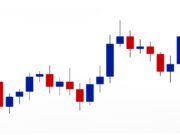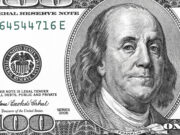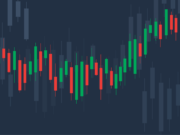Stocks from the energy sector are, and have been, essential to consider for a place in any investor’s portfolio, and there are several clear reasons why. These reasons haven’t changed:
– Diversification will lower one’s reliance on a single sector’s performance.
– Steadiness (energy is critical, and global demand is here to stay).
– Income generation. Stocks firmly rooted in the sector offer attractive dividends. – There’s endless potential for renewable energy and efficiency solutions.
– Energy consumption rises with economic expansion, providing opportunities to profit. Here are three “classics” with room to soar, steady dividends, and strong analyst approval…
Enbridge Inc (ENB)
Transporting 30% of North America’s oil production, 20% of which accounts for U.S. consumption, Enbridge Inc. (ENB) operates the third-largest natural gas utility on the continent. ENB has a diverse renewable energy portfolio, including expanding European offshore wind operations. ENB’s robust energy infrastructure generates stable cash flow supported by long-term contracts and regulated rates. ENB shares most of this consistent cash with investors through attractive dividends while retaining the rest for expansion. With a substantial backlog of secured expansion projects, ENB has a clear vision of growth and has been paying increased annual dividends for 22 consecutive years.
ENB is currently down year-to-date by 5.93%, has a 0.66 beta score, and is trading near the bottom of its 52-week range. At its most recent earnings call, ENB beat analysts’ EPS projections, reporting $0.85 per share vs. the $0.84 per share expected and also showing year-over-year profit margin growth of 11.98%.
ENB is set to report $8.8 billion in sales at $0.52 per share for the current quarter. ENB has an annual dividend yield of 7.12% and a quarterly payout of 65 cents ($2.60/year) per share. With a 10-day average volume of 2.64 million shares, ENB has an average price target of $43.57, with a high of $48.51 and a low of $39.97, indicating a potential 32% price upside. ENB has 11 buy ratings and 11 hold ratings.
[stock_market_widget type=”accordion” template=”extended” color=”#5679FF” assets=”ENB” start_expanded=”true” display_currency_symbol=”true” api=”yf”]
ConocoPhillips (COP)
ConocoPhillips (COP) is notable for its low operating costs. This advantage is complemented by COP’s strong balance sheet, boasting an investment-grade bond rating and a low leverage ratio. These factors provide resilience during periods of low oil and gas prices. COP is positioned to generate substantial cash flow in the future, projecting approximately $115 billion in cumulative free cash flow over the next decade, assuming an average oil price of $60 per barrel. Considering current oil prices may surpass this level in mid-2023, COP has the potential for even greater free cash flow, which it intends to share with investors.
Down year-to-date by 11.85% and near the bottom end of its 52-week range, COP has an attractive 0.70 beta and a PEG (price/earnings/growth) ratio of 0.72x. COP most recently surpassed analysts’ EPS forecasts by a 15.11% margin, reporting $2.38 per share vs. the $2.07 per share that was expected. COP is expected to show $15.5 billion in sales at $2.14 per share for the current fiscal quarter. COP has a 5.09% annual dividend yield and a quarterly payout of $1.32 ($5.28/year) per share. With a 10-day average volume of nearly 5 million shares, COP’s median price target is $127, with a high of $165 and a low of $94; this suggests a possible 59% price leap from its current spot. COP has 18 buy ratings and eight hold ratings.
[stock_market_widget type=”accordion” template=”extended” color=”#5679FF” assets=”COP” start_expanded=”true” display_currency_symbol=”true” api=”yf”]
Nextera Energy Inc (NEE)
NextEra Energy (NEE) excels financially in the electric utility sector with a top credit rating and a sound dividend policy. Projected annual dividend growth of 10% through 2024 makes NEE an exceptional renewable energy dividend stock. NEE’s Real Zero plan launched last year aims to eliminate carbon emissions from its operations by 2045. This involves expanding solar energy production, maintaining nuclear energy, and replacing natural gas with green hydrogen and renewable natural gas in power plants. These strategic investments from NEE are expected to boost earnings while reducing emissions, benefiting both shareholders and the environment.
NEE is currently down year-to-date by 10.36%, trading at the bottom of its existing 52-week range, and boasts a 0.47 beta along with a PEG ratio of 1.97x. NEE most recently beat analysts’ EPS projections by a 16.7% margin and shows robust year-over-year growth in revenue (+132.39%), net income (+562.53%), EPS (+552.17%), and net profit margin (+298.98%). For the current quarter, NEE is projected by analysts to report $6.4 billion in sales at $0.81 per share. NEE has an annual dividend yield of 2.49% and a quarterly payout of 47 cents ($1.88/year) per share. With a 10-day average volume of 7.1 million shares, NEE has an average price target of $91, with a high of $108 and a low of $84, representing a potential price upside of over 44% from its current place on the charts. NEE has 16 buy ratings and five hold ratings.
[stock_market_widget type=”accordion” template=”extended” color=”#5679FF” assets=”NEE” start_expanded=”true” display_currency_symbol=”true” api=”yf”]












